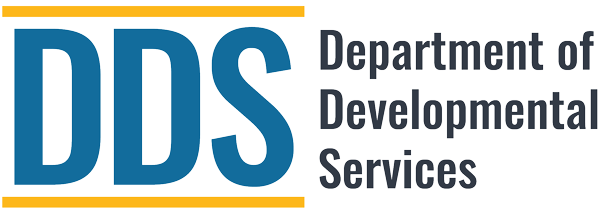Upon completion of each of the following sessions, the DSP should be able to:
Session 1: Define “developmental disability”; Identify characteristics of specific developmental disabilities; Identify the values of the California developmental disabilities service system; Describe the DSP’s role as both a staff and team member; Identify ways for the DSP to apply ethics and use observation, communication, decision making, and documentation; and, Use “People First” language.
Session 2: Identify agencies and people involved in the California service system; Describe regional center functions; Demonstrate understanding of the purpose of the Individual Program Plan (IPP); Identify the members of the individual’s planning team; Identify rights of individuals with developmental disabilities and understand the DSP’s responsibilities in supporting those rights.
Session 3: Identify principles of risk management, common risks to individuals’ health and safety, and measures to mitigate risks; Describe how to use risk assessment tools; Define “mandated reporter”; Identify incidents that the DSP is required to report and to whom; Describe procedures for reporting abuse and neglect; and, Complete a special incident report.
Session 4: Demonstrate how to assist individuals in the self-administration of medication; Identify resources for information about medications; Identify the Five Rights for assisting an individual with self-administration of medication; Identify the difference between “prescription” and “over-the-counter” medications; Identify key information on prescription medication labels; and, Document self-administration of medication.
Session 5: Document medication errors and missed dose; Identify and document medication side effects and drug interactions; Describe required reporting procedures and appropriate responses in cases of medication side effects and drug interactions; Identify appropriate responses to life threatening side effects; Identify procedures for destroying medication; Describe procedures for packaging medication to be taken away from the home.
Session 6: Describe the basic concepts of health and wellness; Identify information in a physician’s report and a written health history; Identify in the IPP specific DSP responsibilities for maintaining the best possible health; Identify three ways germs spread infection; Identify appropriate times to wash your hands and describe procedures for hand washing; Identify when to use disposable gloves; Demonstrate the correct procedure for gloving; Apply professional ethics to personal care.
Session 7: Describe obstacles to good oral health; Identify ways to help individuals to have healthier teeth and gums; Identify aids to help overcome physical obstacles to good oral health; Describe positive behavior supports that help reduce resistance to oral hygiene procedures; Keep simple progress records for oral health.
Session 8: Identify changes that may be signs and symptoms of illness or injury; Know when and how to call 911 and/or the doctor; Document and report changes that may be signs and symptoms of illness or injury; Describe how to take an individual’s vital signs including pulse and temperature; Recognize the signs and symptoms of and identify way to prevent skin breakdown, constipation, overexposure to sun and heat, and choking; Describe different types of seizures and how to provide seizure First Aid; Identify health problems related to aging.
Session 9: Describe how to create and maintain a safe home environment to prevent falls, poisonings, and other injuries; Describe how to prevent and respond to a fire; Describe how to prevent drowning; Identify the principles of body mechanics that prevent back injury; Identify the rules for safely transporting an individual in a wheelchair; Describe exercises that help prevent back problems; Describe how to be prepared for, and respond to, external disasters.
Session 10: Identify ways to modify communication to ensure understanding; Identify ways to resolve conflict by using active listening and “I” messages; Describe ways to overcome communication barriers; Identify ways to support individuals’ to communicate effectively.
Session 11: Identify factors that promote positive behavior; Observe and assess the communicative function of behavior; Identify aspects of an individual’s quality of life and physical environment that influence behavior; Observe and assess for a positive environment
Last modified: March 6, 2019
